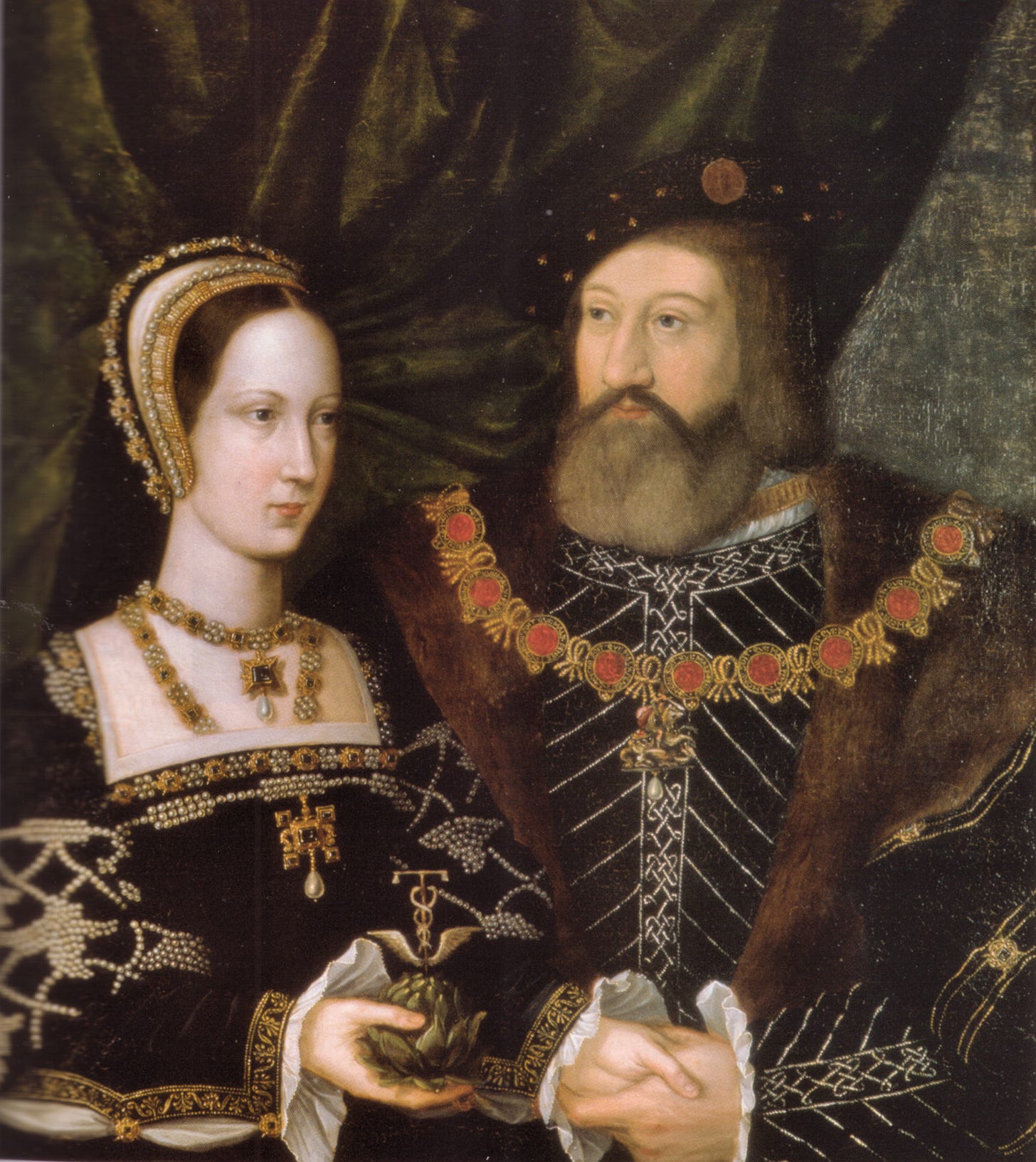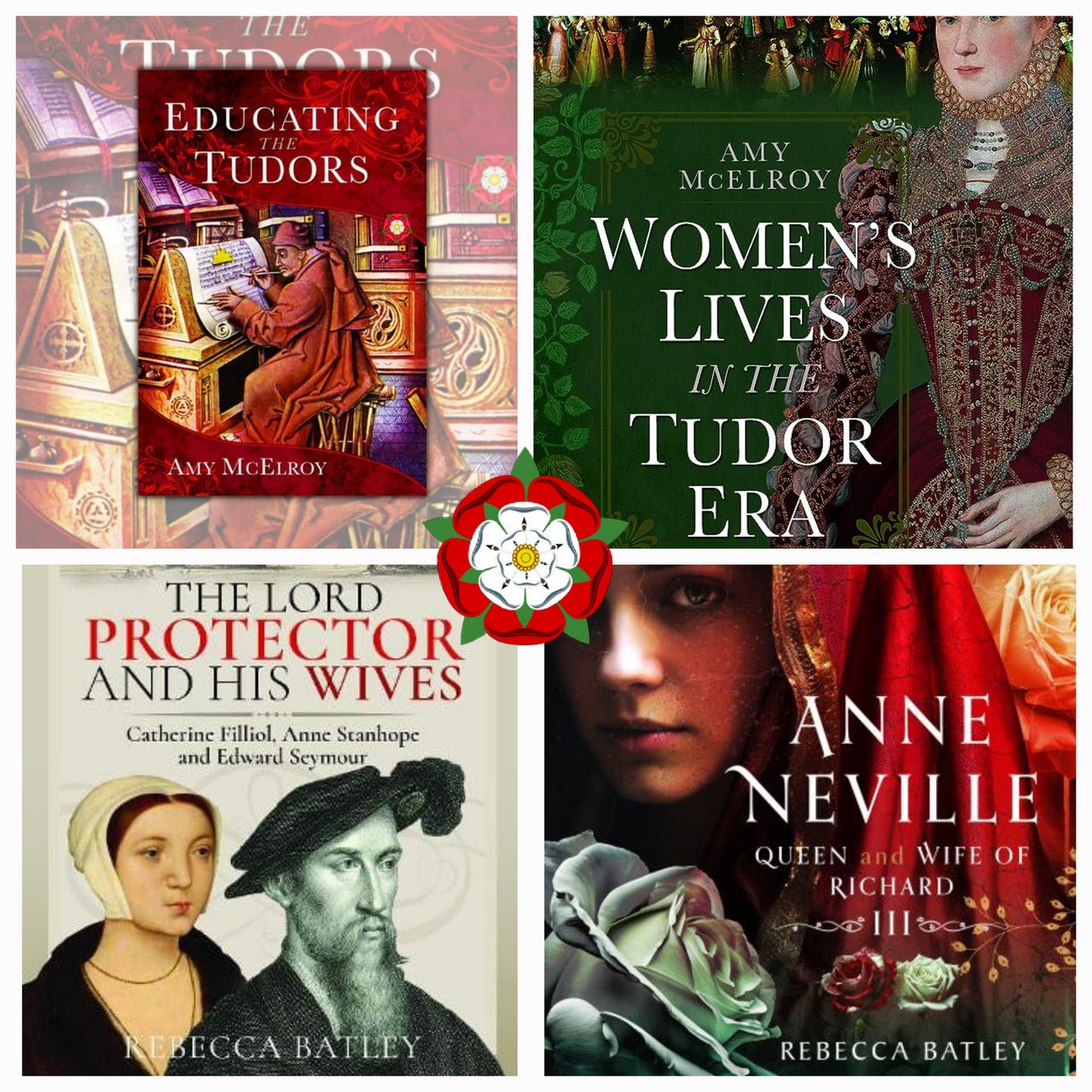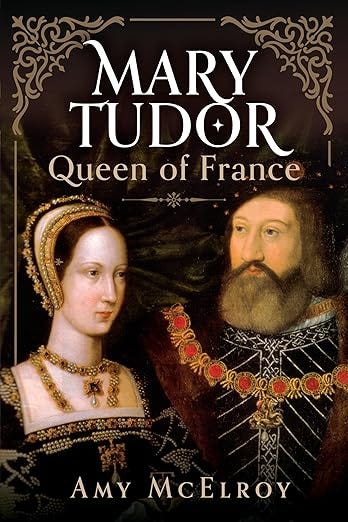Book Review: "Mary Tudor: Queen of France" by Amy McElroy
A vibrant and meticulous look into the life of Mary Tudor, the younger sister of King Henry VIII.
“Mary's beauty and ancestry should not be her only legacy; she was clearly a highly competent letter writer, using her skill to get her way and protect herself and those she cared about.” ~ Amy McElroy
When one thinks of Tudor history, the towering figures of Henry VIII, Mary I, and Elizabeth I usually come to mind. But what of the minor Tudors, such as Henry's siblings Arthur, Margaret, and Mary? In her latest book Mary Tudor: Queen of France, author Amy McElroy pens a meticulous and vibrant history of the youngest Tudor sibling, the lively and lovely Mary, Queen of France and later Duchess of Suffolk.
I received an advanced reader copy of this book via NetGalley, and I’m excited to offer my thoughts and support to Amy! She’s an amazing person and author, and I’m grateful to have struck up a friendship with her.
If you haven’t subscribed already, I highly recommend
, a joint collaboration between Amy and Rebecca Batley.Synopsis
The Tudor dynasty seemingly attracts those drawn to its romance: the relationship between Anne Boleyn and Henry, the love between Mary and Charles Brandon, the did-they-didn’t-they dynamic of Elizabeth and Robert Dudley. Although important, of course, other facets of those lives enhance each of these stories, and it's this focus on Mary's beauty and relationship with Charles Brandon that Amy explains but also expands upon in her illuminative work.
There's more to Mary than simply her second marriage: her familial dynamic, her first serious betrothal, her life in France, her struggles to find happiness and prosperity amidst uncertain economic circumstances, her passion for clothing, dancing, and pageantry, her proficiency in wordsmithing, and so much more. Amy broadens our understanding of Mary's life from her youth to her passing in 1536.
On March 18, 1496, Mary Tudor was born at Sheen Palace to Henry VIII and his wife Queen Elizabeth of York. Her parents had married in the aftermath of the Battle of Bosworth, uniting the divergent York and Lancastrians lines of descent from King Edward III. Mary was the youngest of their surviving children. Sadly, Elizabeth of York succumbed to complications from the birth of her last daughter, Katherine, passing away on February 11, 1503.
Amy details Mary's life from official records, inventories, letters, and more, painting a compelling portrait of this astonishing woman. At the book's beginning, she devotes significant time to Mary's childhood, paying particularly close attention to the princess’s education and her first betrothal to Charles, Prince of Castile, the son of Philip the Handsome and Joanna of Castile.
After this fell apart, especially after Henry VII’s death in 1509, Mary married the French king Louis XII. She ruled as Queen of France for a few months before Louis died on January 1, 1515. It's after this point where many recognize Mary's story as the wife of Charles Brandon.

Before Mary left for France to marry Louis, she extracted a promise from her brother Henry that she could marry for love should Louis predecease her. As a result, she married Charles Brandon, Duke of Suffolk and Henry's best friend, shortly before her return to England. Evidence supports this marriage as a love match, and signs indicate that Henry was aware of their mutual attraction.
The couple roused the king's ire, however, when they married sooner than expected, in March 1515, and without his firm approval. He fined them, but eventually allowed them to return to England. Mary and Charles lived happily together, raising two daughters of their own in addition to two daughters from Brandon’s previous marriage. The book follows Mary’s life until her death on June 25, 1533.
Review
Mary Tudor: Queen of France is that rare non-fiction piece that combines deep research and engaging narrative to create a highly absorbing and informational book. Amy encourages readers to examine Mary's life more thoroughly, that she deserves to be remembered for more than just her appearance and her family. “Mary's beauty and ancestry should not be her only legacy; she was clearly a highly competent letter writer, using her skill to get her way and protect herself and those she cared about.”
I appreciated Amy’s focus on three particular aspects of Mary's life that often receive little attention: her first betrothal, her writing ability, and her care and support for those who served her.
Mary's betrothal to Prince Charles - who would go on to become Charles V - reflected her father's affection for her (in addition to her value in a marriage alliance) and her chance for a respectable and perhaps content marriage. The negotiations between Henry and Charles’s protectors - Maximilian, the Holy Roman Emperor; Margaret of Austria; and King Ferdinand of Castile - proved long and complex and ultimately fell through. However, in behavior which counteracts his normal frugal reputation, ensured a bountiful dowry for his daughter so that she would be provided for and have a comfortable life.
Mary's ability to influence by her adept writing and her support for those in her employ often go hand-in-hand. Amy recounts several instances in which Mary wrote to influential characters such as Cardinal Thomas Wolsey in an effort to find them gainful employment, reward them, or attempt to return them to her service. This paints the Queen as a generous, intelligent, and politically astute woman with a keen mind and kind heart.
Amy’s biography of Mary Tudor offers readers a refreshing, balanced, and nuanced look into her life. Mary was a multifaceted and complex woman who deserves the telling of her story in a compassionate and authentic manner, and Amy McElroy has done just that. This book was a joy to read, and those interested in Tudor history, women's history, or English history will find much to engage with in Mary Tudor, Queen of France.
Book Summary
Title: Mary Tudor: Queen of France
Author: Amy McElroy
Publisher: Pen & Sword Books
Publication Year: January 2025
Page Count: 224pp
If you enjoy this content, please consider buying me a coffee…or a pint…or a new book! Your support helps keep Musings of a Bookish Historian going and means the world to me. Thank you!
Featured image: Wedding portrait of Mary Tudor and Charles Brandon, attributed to Jan Gossaert, oil, c. 1515 (Woburn Abbey Collection)









Another wonderful review, Amy. Thanks for sharing!
Thanks for sharing this Amy! I love how you give the historical background to the book before sharing your review - really helps to set it in its context. I knew I wanted to read this before, and now I *really* want to read it!